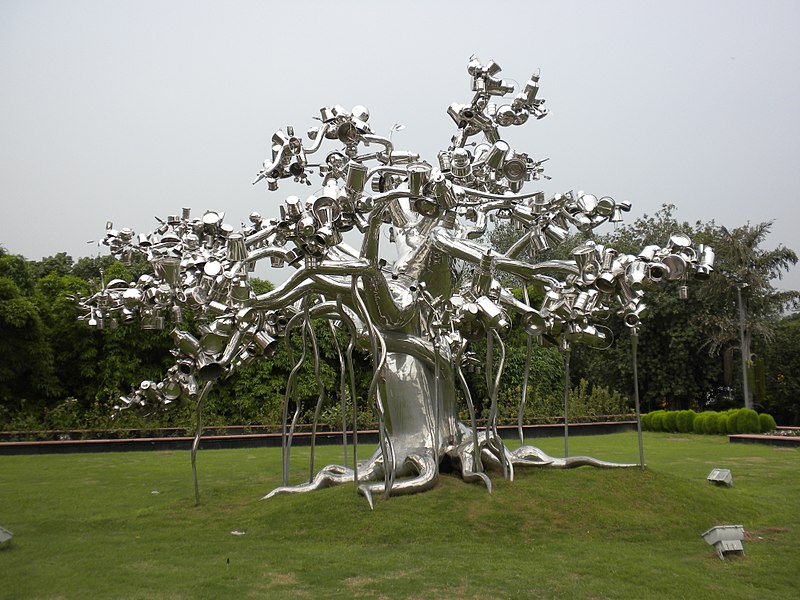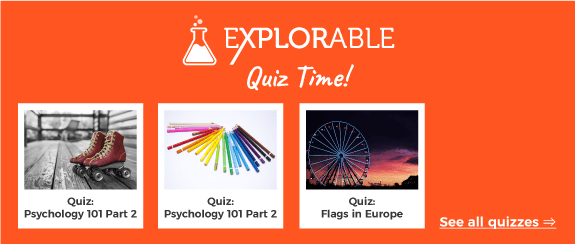- Home >
- Intelligence and Creativity
Intelligence and Creativity
Quick - how many non-obvious uses for a trampoline can you think of?
What do a lion and a jar of pickles have in common?
Imagine right now that everyone in the world suddenly loses their sight at the same time – what would happen in the next 24 hours?
The above questions are the kind you could expect to find on early psychometric tests designed to measure a person’s creativity. Most definitions of creativity emphasize the bringing into being of something novel – art, an invention, an original story, or even a new scientific theory. Creativity has been associated with “breakthrough ideas”, unusual combinations of familiar elements, harmonious compositions, flexibility, originality, divergent thinking, curiosity and the ability to approach problems from an entirely new perspective.

Photo courtesy Hardik Dayal
Naturally, theorists have been interested in the ways that creativity and intelligence are connected. After all, the scientific method and the creative process seem to have plenty in common:
- Both need to be keenly aware of the relationships and interconnectedness of concepts
- Both are engaged in problem-solving
- Both put forward “hypotheses” that are tested in different ways
- In large part, both are concerned with the sharing of results or outcomes
In fact, many notable scientists have attributed some of their most influential work to a flash of insight, a dream, or a moment of inspiration that came after following an unusual hunch.
The work of Sternberg and O’Hara has outlined five main ways that intelligence and creativity may interact:

Creativity is a kind of intelligence
Gardener’s theory of multiple intelligences specifies creativity as one kind of intelligence, as does the Cattell-Horn-Carroll theory. Some theories see creativity as the process whereby pre-existing knowledge is used to solve novel problems – something strongly related to fluid intelligence, or gf.
Intelligence is a kind of creativity
Other theorists have disagreed and put forward a model to explain how creativity is the umbrella ability that requires the convergence of many smaller abilities – cognitive intelligence, motivation, personality, knowledge – to successfully bring about novel and useful ideas.
Creativity and intelligence overlap
Still others, for example PASS theory, consider a third possibility, namely that creativity and intelligence are distinct but have many intersecting features. For example, both demonstrate problem solving skill and the ability to take action towards goals.
It has been proposed that there are positive correlations between the two but only up to an IQ of around 120, after which the relationship is less obvious. A related suggestion is that a sufficiently high IQ is a kind of threshold “entrance fee” into the realm of creativity.
Creativity and intelligence are part of the same single construct
A few theorists have concluded that high correlations and a strong overlap simply indicate that creativity and problem solving are precisely the same thing. Though certain solutions to problems may have a surprising, out-of-the-box quality, they really are nothing outside the range of ordinary cognitive function. Of course, anyone who’s encountered a truly moving piece of music, for example, would struggle to see how it was a product of the same construct responsible for reasoning and logic!
 Photo courtesy Rebmodnray
Photo courtesy Rebmodnray
Creativity and intelligence are completely separate constructs
Some research has shown that top scorers on IQ tests are not top scorers in tests for creativity, suggesting that the two are distinct qualities. Subsequent research, however, has failed to replicate these results, leading most in the field to conclude that there likely is at least some association between the two after all.
Other Correlations
Current attempts to more closely understand intelligence and its relationship to other qualities has yielded an explosion of research showing connections to not only creativity, but to emotion, mental health problems, personality type and even ambidexterity. Some theorists have found that the application of intelligence through creativity can be heavily moderated by stress and the presence of positive emotion.
Others have examined the faint but persistent relationship between creativity and mood disorders, schizophrenia and suicide. Though it’s easy to think of the dozens of writers, artists or musicians who’ve battled depression and substance abuse, studies actually show slight or no relationship between creativity and poor mental health on average.

The Mulberry Tree by Vincent van Gogh
Check out our quiz-page with tests about:
Lyndsay T Wilson (Jan 4, 2018). Intelligence and Creativity. Retrieved Dec 15, 2025 from Explorable.com: https://explorable.com/intelligence-and-creativity
You Are Allowed To Copy The Text
The text in this article is licensed under the Creative Commons-License Attribution 4.0 International (CC BY 4.0).
This means you're free to copy, share and adapt any parts (or all) of the text in the article, as long as you give appropriate credit and provide a link/reference to this page.
That is it. You don't need our permission to copy the article; just include a link/reference back to this page. You can use it freely (with some kind of link), and we're also okay with people reprinting in publications like books, blogs, newsletters, course-material, papers, wikipedia and presentations (with clear attribution).
Footer bottom


